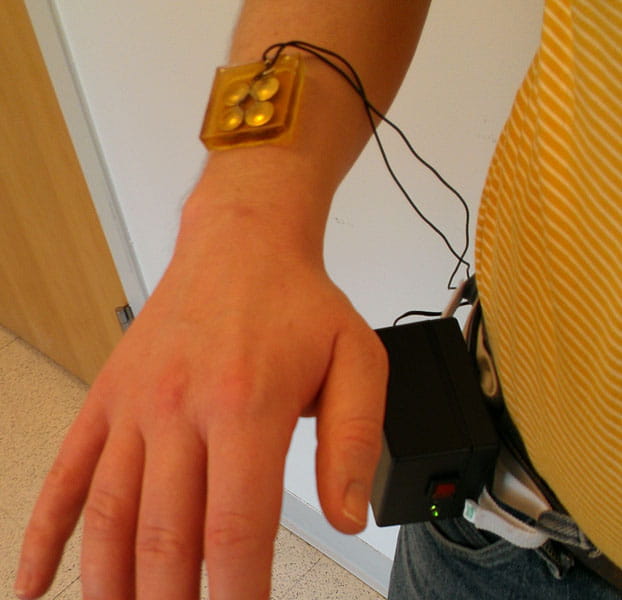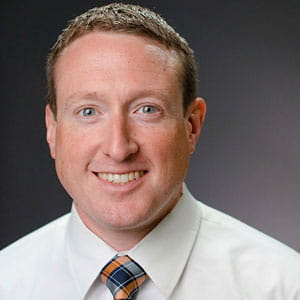Ultrasound Wound Healing

- Drexel Selects New, World-Class Life Sciences Building at 3201 Cuthbert Street for Medical Research Operations
- Breakthrough on Gene Therapy for Hereditary Spastic Paraplegia
- Drexel Environmental Collaboratory Releases Cross-Sector Findings on Severe Weather Recovery Challenges
- Drexel Launches the Manuel Stamatakis Center for Alternative Investments at the LeBow College of Business

In hopes of helping patients suffering from extremely slow-healing injuries, called chronic wounds, researchers from Drexel’s School of Biomedical Engineering, Science and Health Systems and College of Medicine are taking a new approach to using ultrasound as a healing tool. By dialing down the energy level on therapeutic ultrasound, similar to that used to treat athletes’ muscle and ligament injuries, the team is finding a solution that could give the body’s natural healing process a boost and could save patients a great deal of time, money and suffering.
Venous ulcers are some of the most common chronic wounds, afflicting more than 500,000 people each year. These wounds are caused by venous hypertension, which is the result of a malfunctioning valve in a vein that allows blood to flow backward. This disorder has been known to present itself, among other symptoms, in the form of varicose veins, swelling, discoloration, and –in the most severe form- painful ulcers of the lower extremities. Patients who suffer from this type of chronic wound pay as much as $2,400 a month for treatment.
“Treating these patients is a very big socioeconomic problem,” said Dr. Michael S. Weingarten, a professor in Drexel’s College of Medicine, the director of the Comprehensive Wound Healing Program and one of the researchers working on the project. “Even with standard treatment these wounds can take months or years to heal. During that time, many of these people are out of work and running up medical bills.”
What the team has found in preliminary tests is that low-frequency therapeutic ultrasound, which operates at a level of energy much lower than ultrasound units used for prenatal monitoring, can increase the rate of healing in these wounds that would otherwise heal very slowly or not at all.
“We have been working with the idea of designing a fully wearable, lightweight and battery powered ultrasound device for a while, but now we are concentrating on showing why it is effective and how it can be a viable treatment that can be made available to more people with these ailments,” said Dr. Peter A. Lewin, a professor in Drexel’s School of Biomedical Engineering, Science and Health Systems, and the primary investigator of the project.
The therapeutic ultrasound device that the Drexel researchers are using, along with compression therapy, is about half as powerful as the kind doctors use to examine expecting mothers and considerably lower than the units used to treat injured athletes. This reduction in power is significant because it allows doctors to apply the ultrasound directly to the dressed wound for a longer period of time because it doesn’t heat up and the pressure of the device is gentler on the injured area.
Drexel’s team, which consists of Lewin, Weingarten, Dr. Leonid Zubkov, a research professor in the School of Biomedical Engineering, and biomedical engineering doctoral students Joshua Samuels, Chris Bawiec and Youhan Sunny. Bawiec and Sunny developed the ultrasound applicator and Samuels conducted tests in Weingarten’s wound clinic at the College of Medicine. During a four-week period the researchers treated 20 people, divided into four groups, to determine the most effective combination of ultrasound strength and duration of time for the treatment.
The most effective combination in the team’s trials proved to be a lower frequency, 20kHz as opposed to 100kHz, for a shorter period of time, 15 minutes rather than 45. The test group that received this combination of treatment options saw all five of its members heal completely by the end of the four-week treatment period. These findings will be published in an August special edition of the Journal of the Acoustic Society of America that focuses on therapeutic ultrasound applications.
“The fact that this is a successful active treatment for wound healing is significant because the most commonly used methods today are passive healing techniques that require more time for the wound to heal,” Weingarten said. “There are very few active therapies commercially available to stimulate wound healing in these patients. There are some biosynthetic skin substitutes which may be applied to the wound and potentially deliver growth factors to stimulate healing, but these technologies are expensive and are not always covered by insurance.”
Weingarten, who sees more than 500 patients per year suffering from chronic wounds, believes that this treatment process could play a significant role in how these wounds are treated in the future.
“If this can be combined with compression treatment in a wearable form, it could be very successful and an affordable option for many patients,” Weingarten said.
As part of a National Institutes of Health study, the group will continue to investigate how and why this treatment works. Using a near-infrared scanning device, developed at Drexel, they will be able to closely monitor the three phases of wound healing -inflammation, proliferation and remodeling- in hopes of unearthing how the mechanisms of healing are augmented by the ultrasound.
“Once we’ve pinpointed the science behind this process, it can be something that could give patients an option for wound therapy that is affordable, easily applied and can be adjusted to give them the most efficient course of treatment,” Samuels said.
Drexel News is produced by
University Marketing and Communications.
